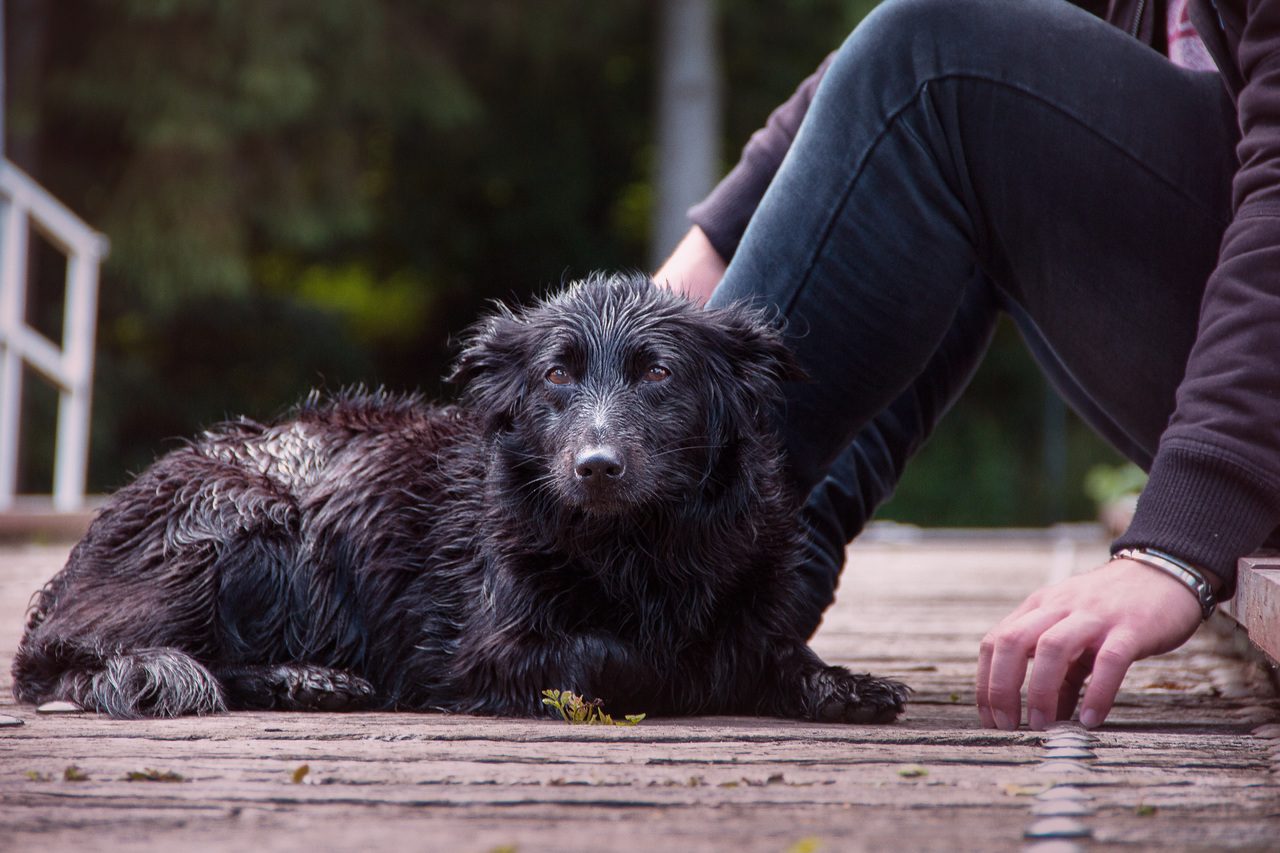Photo Credit: pxhere.com
Maybe they can’t run, jump and spin anymore but there’s lots you can do with your arthritic dog!
Even if your dog shows signs of arthritis, it’s still important to keep them active. There are many benefits in exercising your older dog, such as mental stimulation, heart health, maintenance of weight and keeping their muscles strong and supple.
Contrary to popular belief, lack of regular exercise can lead to further stiffness and injury. Maintaining a healthy weight is one of the biggest things you can do to help your dog avoid the pain of arthritis.
The best rule for exercising your older dog is this: little and often. It’s important to keep those joints mobile, and several short walks throughout the day is much more effective than one long walk. In fact, one long walk once or twice a week can often make your dog feel much worse.
If your dog is limping, it’s important to seek advice and treatment from your vet to help devise a safe exercise program.
Types of Exercise
Gentle walks on grassy and uneven turf
Uneven turf helps with ‘proprioception’ – the involuntary muscle contractions involved with keeping balance. Soft surfaces such as grass will help reduce the impact on their joints. Don’t over-do walks, and always be on the look-out to see if your dog needs a rest.
Swimming at the beach or pool
Non-weight bearing activities such as swimming will still work their muscles and heart, but without the impact on sore joints. We like to introduce swimming slowly and may even recommend a flotation vest!
- Obstacle courses – easy to set them up at home!
- Games such as hide and seek or tug of war.
AVOID fast exercise such as ball throwing with sudden changes in direction or speed or prolonged exercise. Always pay close attention to your dog for any signs of discomfort or tiredness.
Games For Your Older Dog
Feeding a portion of your dog’s daily food intake from your hand during games is brilliant for mental stimulation. Not just with young dogs, but for older dogs to keep them bright, alert and happy too!
1. The Cup Game
As dogs get older, their eyesight and hearing may dim but their sense of smell remains strong.
All you need is three empty cups with a couple of holes poked into them (to let scent out) and a healthy dog treat.
Place a treat under a cup, slide the rest of the cups around on the floor and then ask your dog, “Where’s the treat?”
This is a great possibility for dogs who have a hard time moving around. You get to spend time together, engage his interest — and he gets treats! Yay! Win for the dog!
2. Finders Keepers
This is a thrilling game for older dogs who still remember the glory of the hunt.
Hide some treats, such as pieces of carrot or a portion of his daily kibble, around your house in cups or easily accessible containers. Tell your dog to “Find it!” and let him sniff around.
Don’t make the treats or toys (or even yourself) too hard to find. Remember, he’s a senior. He’ll love it, and so will you.
3. Food Puzzle toys
Food puzzle toys are made to hide a portion of your dog’s food. Your dog must work to get the food out, which motivates your dog to solve a problem. Food toys can help keep your dog moving around plus they keep your dog’s brain engaged too!
The Village Vet will help you create a tailored program for your dog to safely increase their fitness to keep them healthy, happy and mobile.
Senior Classes
Senior classes teach you about massage, correct heat application, physio techniques and more to keep your older dog in a more comfortable state. Acupuncture may be offered as well as mobility exercises to ease pain and increase movement.
Ask our staff if this sounds like something you would are interested in and check out Tim Norris, Both Ends of the Lead Arthritis Master Class.


